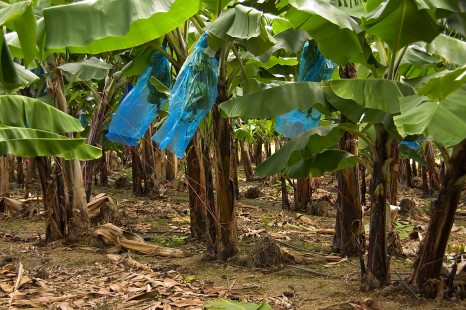Scientists at the Research Institute for Environmental and Occupational Health (Inserm unit 1085) in Rennes and Pointe-à-Pitre – in collaboration with the gynaecology and obstetrics department at the university hospital of Pointe à Pitre/Abymes and the Center for Analytical Research and Technology at the University of Liège – are publishing an article this week on the impact of chlordecone exposure on pregnancy duration and the risk of preterm birth (birth occurring before the 37th week of amenorrhoea).
The data collected and analysed come from the TIMOUN mother-child cohort in Guadeloupe. They were published in the American Journal of Epidemiology on 8 January 2014.
© fotolia
Chlordecone is a chlorinated pesticide that was used in the West Indies between 1973 and 1993 to prevent banana weevil. Its continuing presence in soil, river water and sediments has caused contamination of certain foodstuffs. The contamination of West Indian populations by this pesticide has been proven in previous studies. Chlordecone is now regarded as an endocrine disruptor.
To assess the impact of chlordecone exposure on pregnancy outcome, the team led by Sylvaine Cordier in Rennes and Luc Multigner in Pointe à Pitre set up a large mother-child cohort in Guadeloupe, called TIMOUN (which means ‘child’ in Creole ; see the insert on the next page).
From 2005 to 2007, over 1,000 women were enrolled in the study during the third trimester of their pregnancy, mainly at the university hospital of Pointe à Pitre/Abymes and the hospital in Basse Terre. Exposure to chlordecone was estimated from its concentration in the mother’s blood at the time of birth. The following factors were taken into account: age, parity, body mass index prior to pregnancy, the place of enrolment, the mother’s place of birth, marital status, level of education, gestational hypertension, gestational diabetes and other pollutants such as PCBs.
Maternal exposure to chlordecone was found to be associated strongly with shorter pregnancy duration and an increased risk of preterm birth, regardless of the method of onset of labour (spontaneous or induced). This could be explained by the hormonal, oestrogenic and progestogenic properties of chlordecone.
The consumption of contaminated foodstuffs is now the main source of exposure to chlordecone in the West Indies. While we have a relatively accurate understanding of the types of foodstuffs involved in chlordecone exposure, researchers believe that food sourced, produced, distributed and sold through unregulated channels, as well as food grown in contaminated soil in family gardens, is now a decisive factor in exposure levels.
Therefore, researchers argue that “all appropriate measures should be taken to reduce maternal exposure during pregnancy” and are encouraging the introduction of mechanisms to inform pregnant women about the types of food they should be avoiding during pregnancy (due to risky supply circuits).
Preterm birth can affect postnatal development. The children in the TIMOUN cohort are now being monitored, thus enabling us to better understand these effects, as well as those resulting from prenatal exposure to chlordecone.


